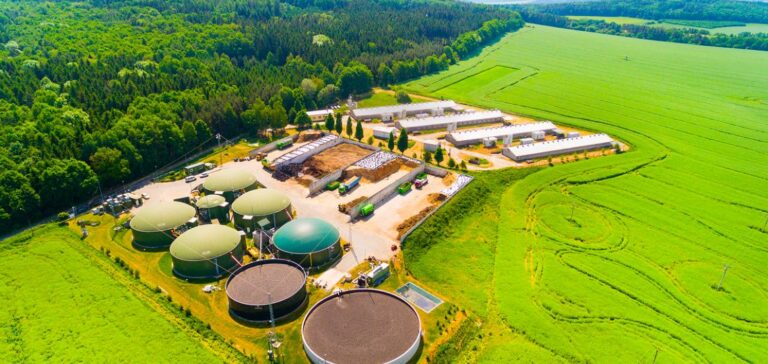A fully loaded dump truck passes over the weighbridge: in the Equimeth methanization unit, near Paris, tons of cereal dust will be deposited to be transformed into biogas and thus reduce France’s dependence on fossil gas.
Surrounded by fields of grain, giant tanks topped with plastic domes house a discreet process: the transformation of thousands of tons of organic waste into biogas, which will feed the gas network and help heat half a dozen surrounding communities.
Here, each year, 25,000 tons of materials, including cereal dust, horse manure and food waste… are thus “valorized”, according to the usual term.
“Biogas comes from the degradation of organic matter by a bacterial regime in the absence of oxygen,” explains Arnaud Bossis, general manager of CVE Biogaz, which manages the Equimeth plant in Moret-Loing-et-Orvanne, in the Seine-et-Marne region.
The biogas is then pre-treated “to remove only the methane molecule”, which is then injected into the gas network, explains Mr Bossis.
To get there, the materials are first crushed and liquefied, to reach “hygienization tanks”, where their “pasteurization, at 70°C during one hour, allows a sanitary treatment”.
The flow is then transferred to the anaerobic digestion process, and stirred for 20 days in one tank, then forty days in a second one, at 38°C.
The gas thus produced is then sucked towards the purification unit.
In this small green container, it “is analyzed and odorized” before being injected into the gas distribution network, thus covering “15% of the needs of the population and activities” in the area, notably for heating and vehicles (bioGNV), describes Arnaud Bossis.
Odour nuisance
“In the context of shortage and scarcity of Russian gas, we are really happy to have biomethane in France,” said to AFP Thierry Trouvé, general manager of the French gas network operator GRTGaz.
“Renewable” because it is non-fossil fuel, this green gas reduces greenhouse gas emissions by 80% compared to natural gas, according to Carbone 4.
However, this category represents only 2% of the gas consumption
of France.
The State aims at 10% in 2030 and the sector believes it can reach 20%, also pleading the services rendered: jobs, agricultural income for sites attached to farms, fertilizer residue, etc..
Positive externalities to be taken into account for Mr. Bossis, who mentions a relatively high production cost of biomethane, around 90 euros per megawatt hour – but now a little less than the current prices of natural gas in Europe, which have increased significantly over the past year.
Main criticism against these factories: the potential olfactory nuisance for the residents.
But the few episodes of this type reported by residents are mainly “related to the spreading campaigns” of fertilizers also produced on the site, according to Olivier Theo, city councilor at Moret-Loing-et-Orvanne.
The establishment of a monitoring committee has allowed to quickly bring up the testimonies of local residents inconvenienced in the spring of 2022, in one of the municipalities and to reach an agreement with the mayor “to try not to spread in the plots closest to homes” and ensure that trucks of fertilizer do not pass through the center of the municipality, the elected official assured.
We could “reach a production capacity of 60 terawatt-hours per year by 2030, which would cover two thirds of what we imported from Russia before the conflict,” adds Mr. Trouvé.
GRTGaz goes so far as to estimate that by 2050, France could be totally gas independent, without affecting the agricultural potential for feeding the French, by recycling agricultural materials and waste.
“The biomethane sector in France is the fastest growing in Europe,” adds the European Biogas Association (EBA), the biogas lobby in Brussels, which estimates that France could become the second largest producer on the continent by 2030.
A thousand projects could be underway by 2025, according to the EBA.
This development should be encouraged by a provision of the Anti-waste law (Agec), which provides that all individuals have a practical solution for sorting their bio-waste from January 1, 2024.





















